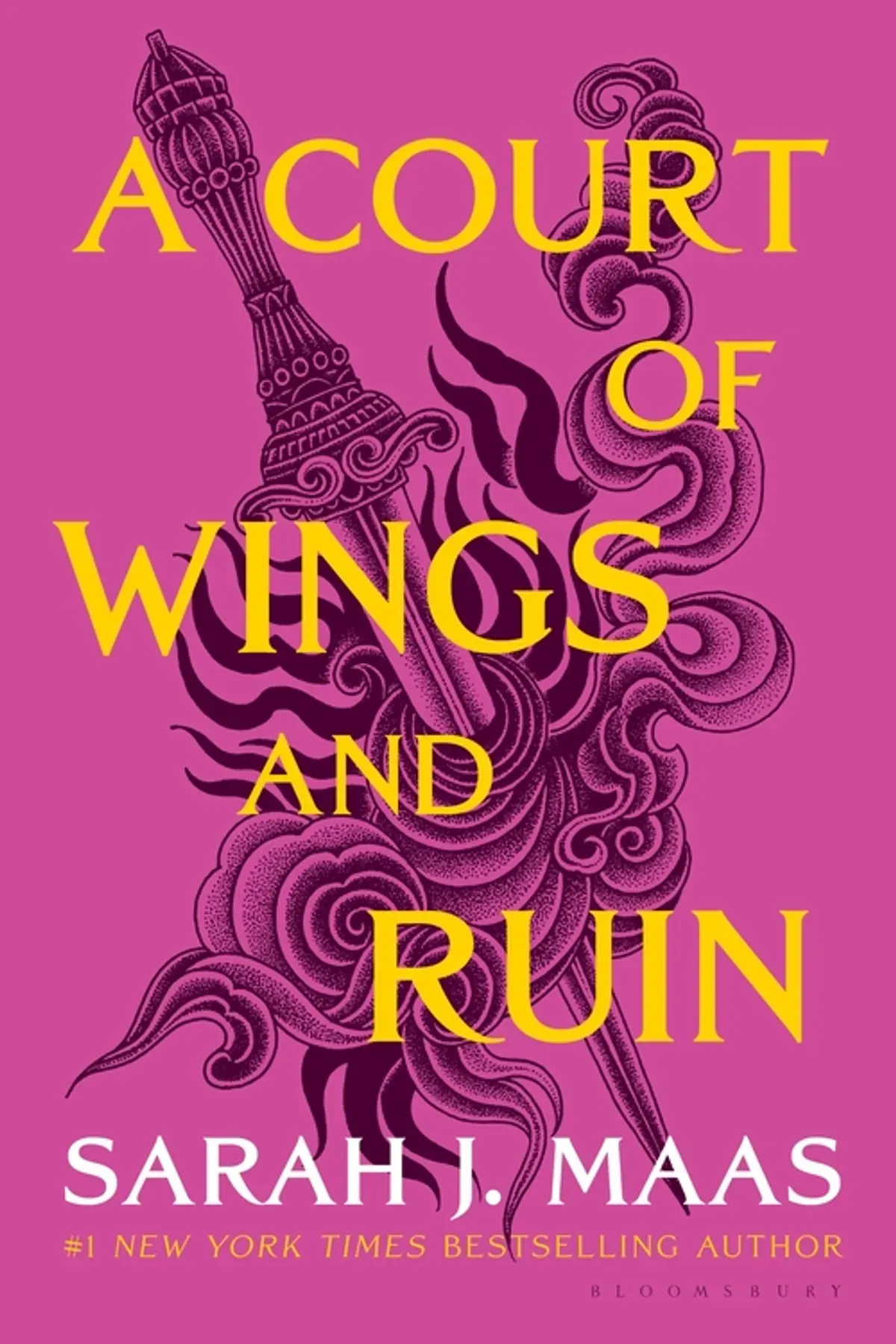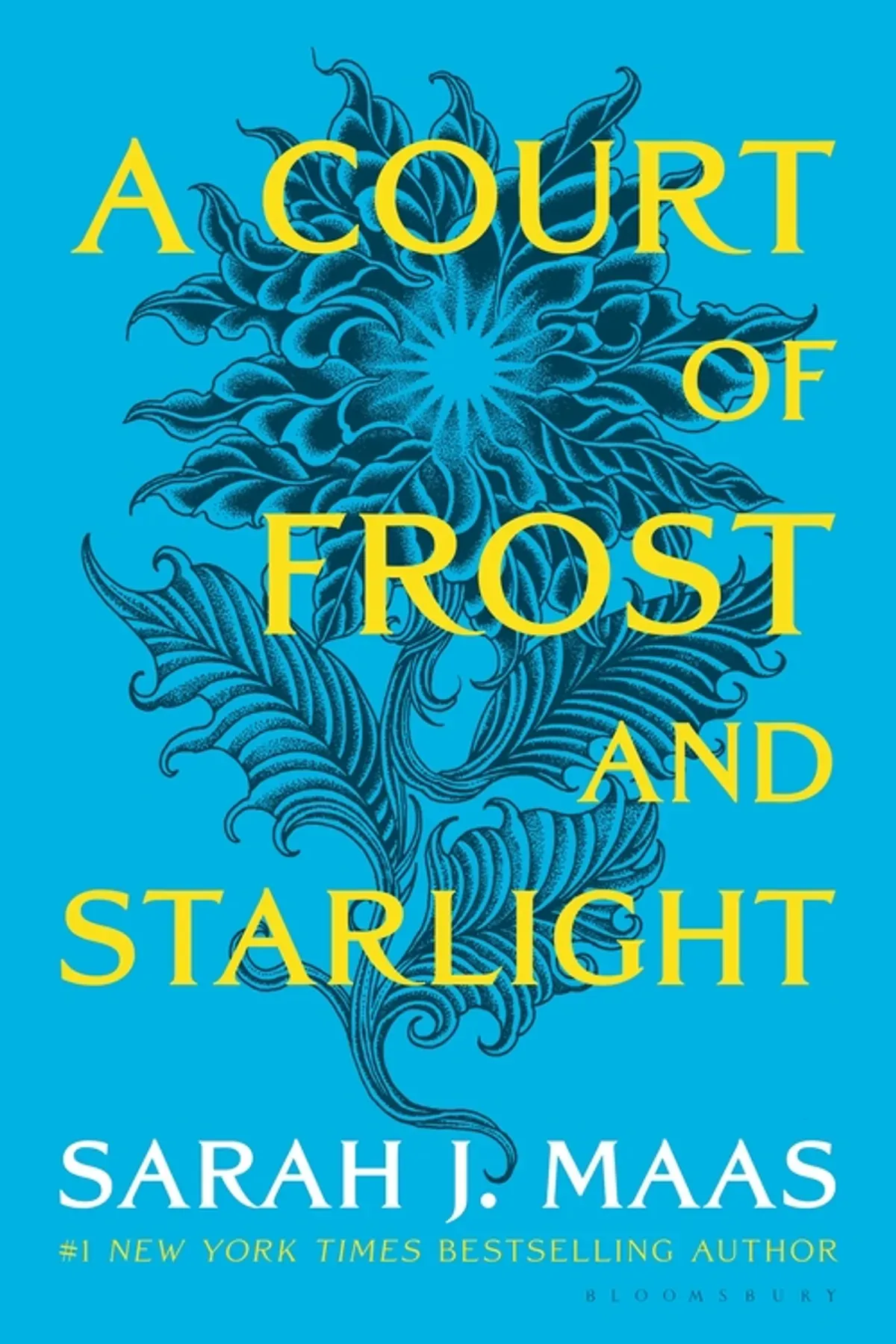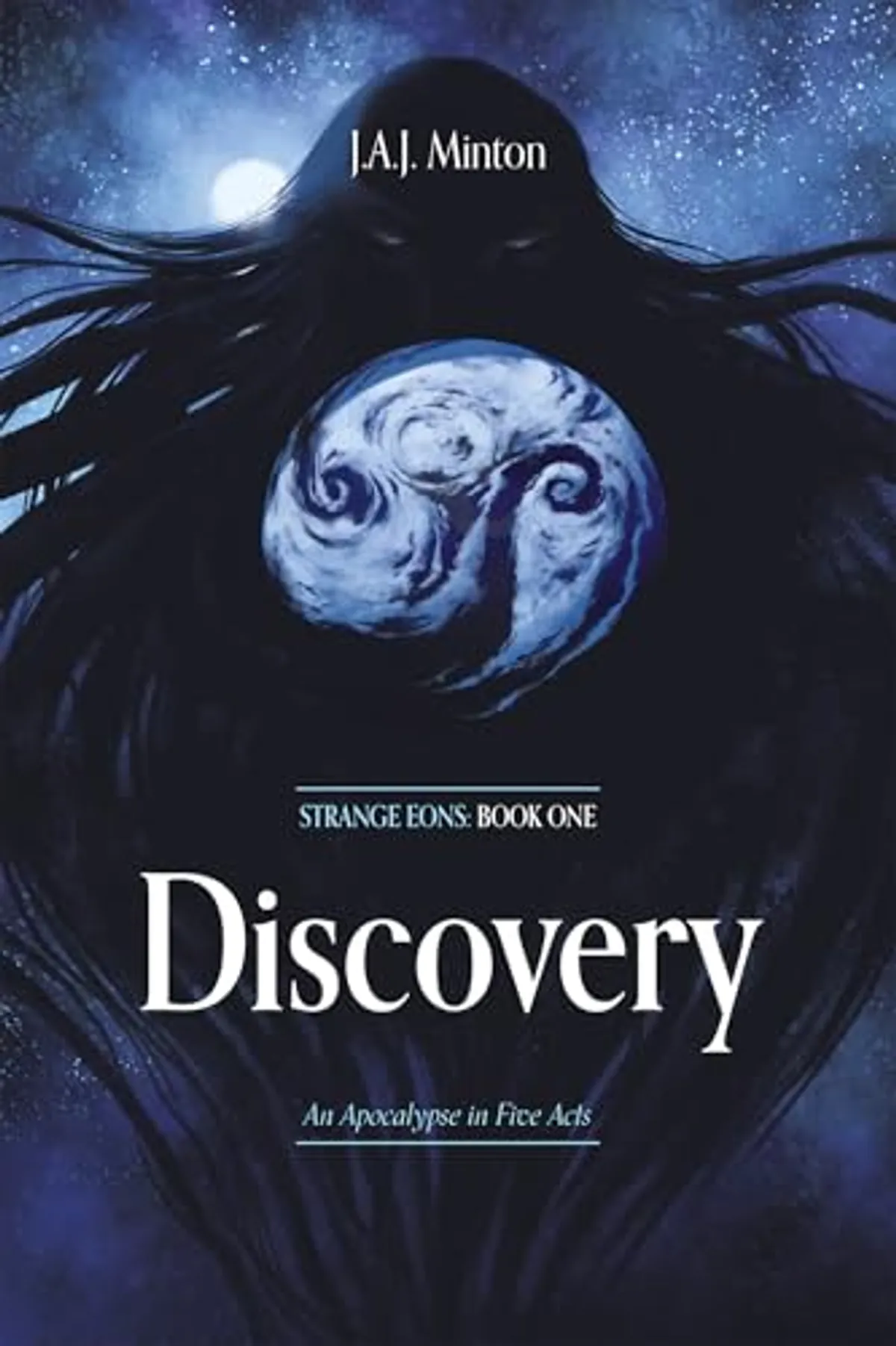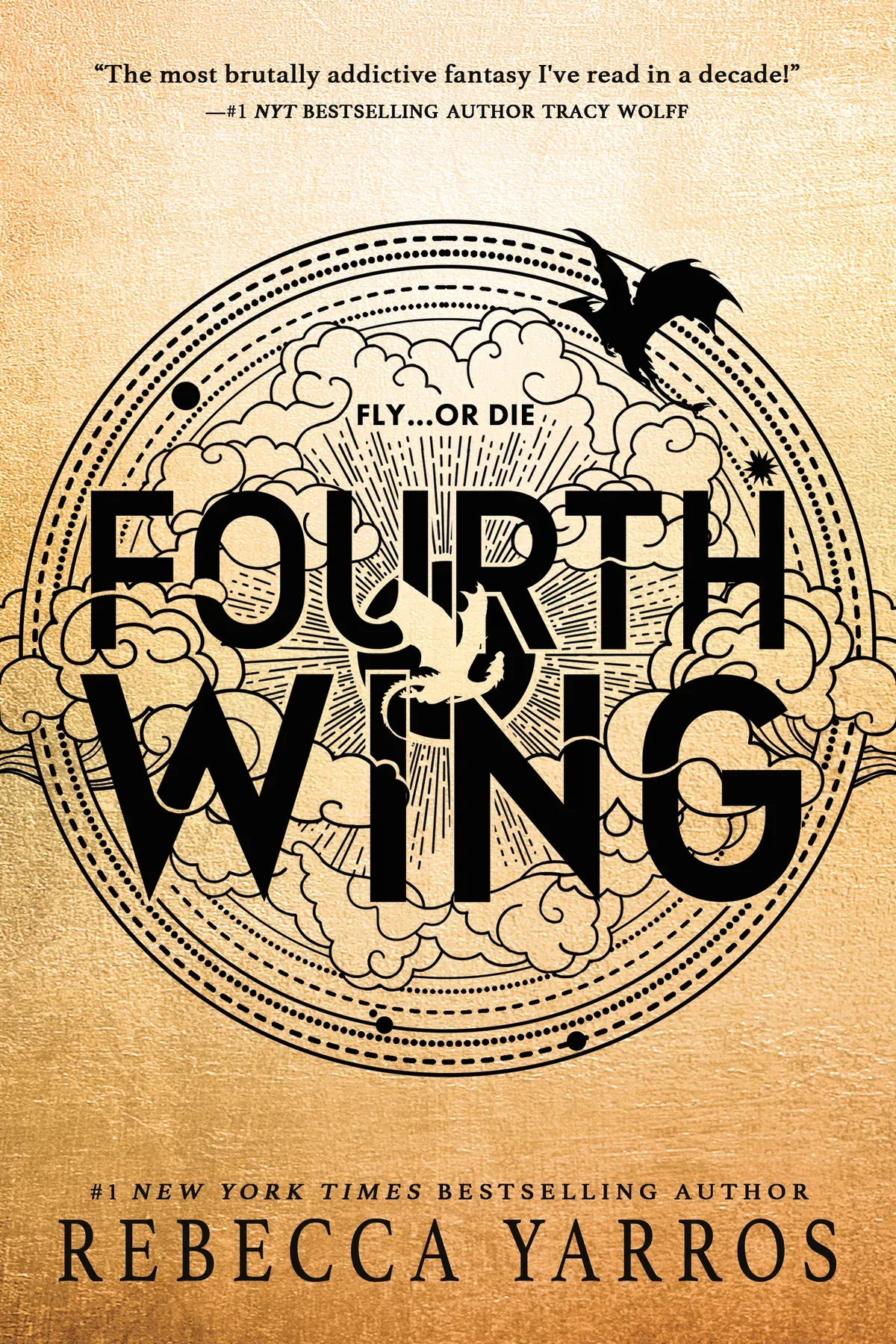A Court of Wings and Ruin
by Sarah J. Maas
Reviewed by Devin Ford on April 19, 2025
Est. Reading Time: 11 min

Quick Info
Title: A Court of Wings and Ruin
Author: Sarah J. Maas
Series: A Court of Thorns and Roses (Book 3)
Published: 2017
ISBN-13: 9781635575590
At a Glance: From Personal Journey to Epic Conflict
The third installment of A Court of Wings and Ruin brings Feyre’s story to an epic conclusion through a war narrative that integrates personal relationships with the destiny of whole kingdoms. The third book stands out to me as a male reader who tracked Feyre’s journey from human huntress to High Fae because of its successful expansion of conflict alongside maintained emotional depth. The narrative begins with Feyre secretly entering the Spring Court to spy on Tamlin and collect information about Hybern’s strategies. Feyre reaches her peak as a strategic leader when she teams up with Rhysand to bring together the seven courts of Prythian in defense against King Hybern’s invasion. The situation becomes critical when Feyre’s sisters endure forced transformations into Fae beings and her father unexpectedly becomes involved. The combination of political maneuvering, espionage and open warfare established a complex conflict which tested Feyre’s abilities in leadership and sacrifice while challenging her combat competencies.
A World at War
Through her storytelling Maas enhanced her remarkable worldbuilding by guiding readers through various courts and unveiling their unique cultural identities during times of crisis. Under Tamlin’s leadership the Spring Court deteriorated unlike the Summer Court’s tropical beauty which contrasted with the Winter Court’s austere refinement and the Dawn Court’s elegant neutrality as a meeting ground.
The High Lords’ council amplified political complexity as ancient grudges and alliances intersected with Hybern’s looming threat. The meetings uncovered long-standing biases and historic disputes which turned an otherwise basic alliance against Hybern into an intricate challenge. The tension produced an authentic wartime environment where trust became an extremely valuable resource.
The ancient beings such as the Bone Carver, the Weaver and Bryaxis served as death gods and primordial entities that brought a different magical tier to the mythology compared to the High Fae. A complex war scenario became more intense with supernatural elements while revealing intriguing aspects of the world’s cosmological structure.
The methodical demolition of the Wall by Hybern caused an uneasy confrontation between species divided for hundreds of years. The refugee crisis combined with the military offensive against human areas established a dramatic setting to explore prejudice and coexistence while highlighting the need to protect vulnerable populations.
Characters Forged in Fire
Feyre reached the peak of her character development when she took ownership of her position as High Lady of the Night Court. Her undercover mission in the Spring Court revealed her transformation from an impulsive, emotionally driven woman into a strategic leader who mastered cold calculation when required. Maas integrated instances of compassion into Feyre’s character development which maintained her core essence despite her growing hardness. Her combination of intelligence and adaptability earned her respect from others even during her most ruthless decisions.
Rhysand demonstrated further complexities when we observed him balancing his natural inclination towards self-sacrifice with his commitments to Feyre. His obligations to serve as High Lord in wartime combined with his own personal wishes to produce a real internal struggle. His decision to maintain his fearsome reputation in exchange for building essential alliances demonstrated significant evolution from his previous philosophy of “ends justify the means.”
The secondary characters experienced significant growth during the narrative with Feyre’s sisters receiving special attention. Nesta directed her rage into a fierce protective instinct and Elain overcame her apparent fragility to reveal unexpected strength and her emergence as a Seer. Their distinct reactions to becoming Made revealed how trauma impacted people in diverse ways.
The direction of Tamlin’s character arc created division among the readership. Tamlin’s possessiveness and poor leadership displayed continuity with seeds planted in earlier books while his characterization became less sympathetic to some readers. His acts of redemption stopped him from being a simple cartoon villain by showing him as a complex character with flaws that eventually surpassed his good qualities.
The Inner Circle members Cassian, Azriel, Mor, and Amren experienced individual storylines that revealed their humanity beyond their supernatural powers. Mor’s personal revelation about her sexual orientation introduced diversity into the story and shed light on the persistent conflicts within their group. Amren’s true nature generated suspense regarding her ultimate alliances.
Plot: Espionage to All-Out War
ACOWAR unfolded in three acts guiding characters through secret missions before engaging in political strategy before transitioning to full-scale warfare. The story’s pace reached its peak when Feyre navigated the Spring Court through meticulous manipulation while continuously evading detection. The alliance-building portion of the middle section created essential breathing space while broadening the political scope of the world.
The narrative drove forward with multiple increasing conflicts instead of a single prolonged battle. Throughout the war both sides experienced strategic successes and defeats which produced a realistic narrative showing no complete domination by either side. This method allowed authors to avoid battle fatigue but ensured readers understood the conflict’s significance and magnitude.
Maas crafted memorable scenes throughout the novel including the High Lords’ summit as well as the library attack and the Weaver’s cottage along with various battlefield encounters which created lasting impressions. The climactic battle sequence combined epic warfare with intimate personal battles to maintain audience emotional engagement while delivering a spectacular experience.
The ultimate chapter settled the core storylines but maintained several open threads to develop in upcoming series installments. Victory came at a suitable price that avoided sensationalism and character arcs reached fulfilling resolutions which respected their progression throughout the trilogy.
The story included multiple subplots with Jurian, the mortal queens and Lucien’s parentage which enriched the main narrative without becoming dominant. Maas managed to lay groundwork for upcoming books while presenting a fully resolved narrative in this installment.
Prose That Captures Wartime Reality
The author Maas developed her writing craft to effectively represent extensive military conflicts. The author’s battle scenes maintained a delicate equilibrium between tactical scope and intense realism to produce engaging combat narratives that consistently remembered human suffering. The writing confronted brutal scenes without resorting to unnecessary violent depiction.
The political summit scenes featured dialogue that vibrated with underlying tension and hidden meanings. Every High Lord expressed themselves uniquely through their voice which demonstrated their court’s traditions and historical background. Through their conversations characters portrayed complex political dynamics accurately while preserving their individual traits.
The silent bonding times between characters served as emotional anchors during the war’s chaotic moments. Through their mental bond Feyre and Rhysand sustained their vulnerability across physical distances created by war which served as a brilliant narrative strategy to keep their connection alive.
The detailed descriptions of different courts demonstrated how each territory’s landscape influenced its culture and defense approaches. Every detail connected fantasy elements to realistic settings which deepened reader immersion. The wartime devastation of these stunning landscapes resonated with fitting emotional depth.
Between the Sheets: Love Amid Chaos
BroMantasy Spice Rating
Getting Serious
(Descriptive Intimate Scenes)
The romantic elements of ACOWAR achieved a spice level rating of 🌶️🌶️🌶️ (3.0) because it preserved the passionate connection from the second book while shifting attention to the forthcoming conflict. Through physical intimacy Feyre and Rhysand show how they support each other while developing their characters instead of it feeling like unnecessary erotica.
Initially existing in a honeymoon phase from the previous book their relationship matured into a genuine partnership that faced significant challenges. The genuine nature of their disputes about danger and self-sacrifice demonstrated how strong relationships handle disagreements. The way this romance highlighted mutual respect and complementary strengths between partners stood out to me as a male reader since it avoided codependent traits.
Other characters, especially Nesta and Cassian, developed sexual chemistry which set up future romantic plots while keeping the primary story intact. The supporting romantic connections provided greater emotional layers to the narrative while expanding its romantic scope past Feyre and Rhysand.
The intricate relationship between Lucien and Elain allowed for more detailed examination of mate bonds. Their relationship explored the tension between destiny and choice in love while examining how traumatic experiences impacted emotional bonding ability. The nuanced portrayal ensured that the mate bond concept did not devolve into an oversimplified destiny trope.
Bro Reading Comfort: Combat and Intimacy
The book ACOWAR received a rating of 😳😳😳 (3.0) because of the uncomfortable reading moments it includes. The book combines intimate scenes with graphic violence which should be read privately to avoid discomfort. The narrative moments were essential to the story but could lead to discomfort if read unexpectedly during a commute.
Readers who favor traditional fantasy found substantial material through the book’s focus on warfare and political maneuvering while romance elements were seamlessly integrated unlike in many romantasy novels. The narrative themes of leadership, loyalty, sacrifice, and moral compromise reached beyond traditional genre boundaries to attract male readers.
The book’s cover design maintained a level of subtlety which prevented it from attracting unwanted scrutiny while its length posed a more noticeable surprise than its actual content. This book’s combination of fantasy and romantic elements served as a welcoming introduction for readers who usually steer clear of romance stories.
Darkness That Reflects Reality
The darkness factor achieved a score of 💀💀💀💀 (4.0) which showed a substantial rise compared to earlier installments. Within the story wartime brutality unfolded through relentless fatalities of significant characters. Feyre’s father’s murder before his daughters and the multiple near-death experiences of main characters generated authentic emotional resonance.
The heinous acts perpetrated by Hybern’s forces pushed characters to the brink of their moral boundaries as they faced challenging choices between vengeance and compassion. The narrative gained maturity because situations presented ethical complexity instead of clear-cut moral choices.
The appearance of ancient beings such as the Bone Carver and the Weaver brought cosmic horror into the story which pushed the darkness further than mere human evil. The presence of beings beyond human understanding intensified psychological stress within perilous events.
Nesta and Elain exhibited contrasting responses to their transformation which kept the impact of trauma as an ongoing narrative theme. The story depicted the fact that certain injuries remained unfixed which offered a truthful representation of how trauma persists beyond the end of immediate threats.
Book Battlefield: Concluding a Trilogy
Through its storytelling, A Court of Wings and Ruin wrapped up Feyre’s journey and laid groundwork for upcoming series installments. The ending succeeded in wrapping up current dangers while foreshadowing future struggles when compared with trilogy closers like Mockingjay (The Hunger Games) and Children of Dune.
ACOWAR stands out within the romantasy genre due to its substantial fantasy content compared to works like Fourth Wing or From Blood and Ash. The political intricacies combined with tactical wartime maneuvers would seamlessly integrate into traditional epic fantasy literature while enhancing the story beyond its romantic aspects.
ACOWAR stood as a strong comparison for readers who appreciate war stories featuring female leads when matched against Naomi Novik’s Temeraire series or R.F. Kuang’s The Poppy War. The Poppy War by R.F. Kuang incorporates more romantic details but has fewer historical foundations compared to similar novels. Readers who appreciate political fantasy will find the novel’s early espionage elements reminiscent of The Traitor Baru Cormorant.
The book’s exploration of power through vulnerability and cross-difference coalitions resonated with present-day readers independent of their specific genre tastes. A universal quality to its elements allowed the book to move beyond genre classification and attract a wider audience.
Should You Bother?
For Fantasy Readers: ACOWAR showcased true fantasy elements by weaving political power plays with ancient magic systems and massive battlefield scenes. Readers who started the book for its fantasy elements found the war narrative sufficiently strategic to meet their expectations.
For Romance Skeptics: Feyre and Rhysand developed a mature partnership that went beyond just passion. Their cooperative efforts during critical moments showed how romantic elements can strengthen fantasy storytelling rather than detract from it.
For Series Completionists: The finale of Feyre’s character journey resolved earlier plotlines and prepared readers for upcoming narratives. The story honored its audience by showing character development that led to substantial achievements through arduous success.
For War Story Enthusiasts: Different conflict levels including espionage along with political struggles and open warfare led to a comprehensive war story which explored leadership choices, the sacrifices required and the true price of winning through multiple perspectives.
Final BroMantasy Verdict
A Court of Wings and Ruin delivered a strong ending to Feyre’s transformation from survivor into leader. The progression from individual struggles to global warfare appeared justified instead of contrived while character development remained essential throughout the epic battle scenes.
Maas demonstrated exceptional skill in preserving emotional depth as she broadened the narrative scope. The narrative maintained its connection to emotional stakes among characters which balanced the grand scale conflict and kept it from becoming too abstract. The victory’s expense matched its value because it paid due respect to the threat’s scale without descending into nihilism.
The romance elements in the story strengthened the fantasy narrative by showing how relationships developed under intense conditions. The relationship between Feyre and Rhysand demonstrated how partners supporting each other with complementary abilities can overcome traditional genre boundaries.
ACOWAR concluded the trilogy by both paying tribute to previous events and laying groundwork for upcoming tales. Those who desire closure will appreciate the resolved character arcs but readers who continue the series will encounter fresh story paths to investigate. This ending provided a satisfying conclusion to Feyre’s story by balancing closure and future possibilities whether readers decide to continue with the series.
You Might Also Enjoy
Frequently Asked Questions
Is this book part of a series?
Yes, this is book 3 in the A Court of Thorns and Roses series.
How spicy is the romance?
We rate the spice level at 🌶️🌶️🌶️ (3/5). Maintains the passion established in the second book while focusing increasingly on the impending conflict
How uncomfortable is it to read in public?
We rate the public reading discomfort level at 😳😳😳 (3/5). Contains several intimate scenes alongside graphic violence that may require discretion for public reading
How dark are the themes in this book?
We rate the darkness level at 💀💀💀💀 (4/5). Unflinching portrayal of wartime brutality with significant character deaths and moral compromises
What age group is this book for?
This book is generally recommended for adult readers due to its mature themes. We recommend checking specific content warnings if you are sensitive to certain topics.





